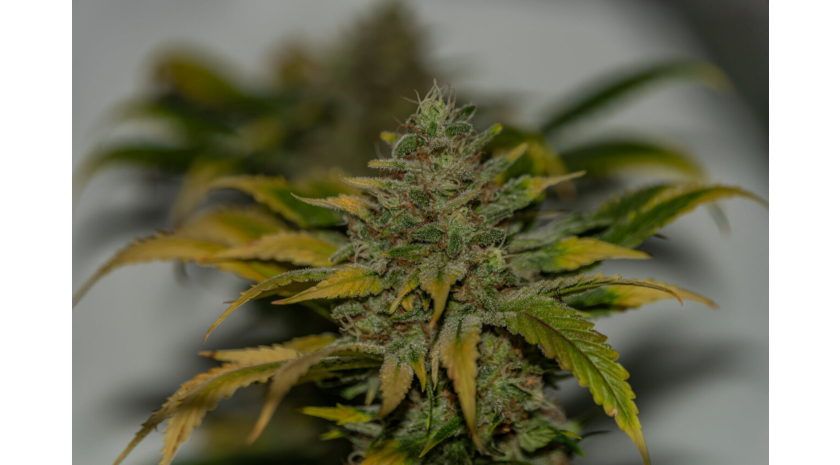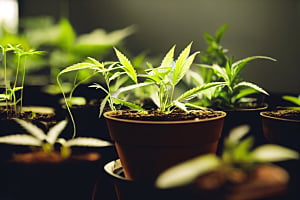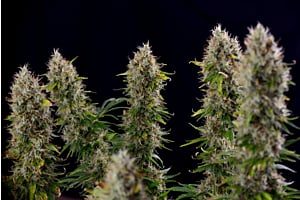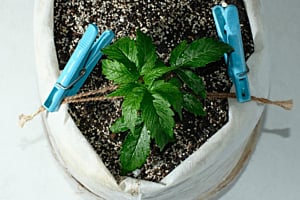Cannabis zinc deficiency, or an overabundance of this nutrient, can lead to stunted growth and an abundance of other problems. However, many farmers often overlook zinc and other minerals and are then left to rue their ignorance.
For example, most cannabis growers can name many essential nutrients. The macronutrients are the ones required in the greatest quantities. Three of these—nitrogen (N,) phosphorus (P,) and potassium (K,)—are always represented on fertilizer packages as N-P-K. Calcium, magnesium, sulfur, carbon, hydrogen, and oxygen are other macronutrients.
Aside from macronutrients, there are micronutrients, sometimes referred to as trace minerals. These include zinc, copper, iron, chlorine, manganese, nickel, boron, and molybdenum.
If there’s zinc deficiency in a plant or lack of any other micronutrient, the crop will not survive or reproduce. Although the name ‘micronutrients’ might suggest they are unimportant, that's completely not the case. Micronutrients are just as essential to plant development, but they’re only needed in small amounts.
Take the case for molybdenum. Lack of this micronutrient leads to worse complications than zinc deficiency for a plant, even though it’s needed least. In fact, most cannabis seeds already have enough molybdenum to sustain the plant throughout its life, as this mobile micronutrient shifts from older to younger tissue.
However, a molybdenum deficiency in cannabis is possible, and it leads to a reduction in nitrate to nitrite conversion, which is the first step in synthesizing amino acids and proteins.
Too little or too much of any micronutrient affects your crop negatively. Fortunately, micronutrients are present in most natural water sources and need not be added to your soil often. However, indoor cannabis growers frequently use hydroponic systems with reverse osmosis water, which could likely lead to cannabis zinc deficiency and a lack of other micronutrients because the water filters with every cycle.
Read on to get the necessary information for diagnosing zinc deficiency in cannabis plants and how you can fix the issue.
Importance of zinc for your cannabis plants
Zinc is an indispensable micronutrient, even though it's only required in small quantities. Weed plants need zinc, as it:
- Activates enzymes responsible for the synthesis of certain proteins
- Aids in forming chlorophyll and some carbohydrates
- Helps your cannabis plant to withstand cold temperatures
- Plays an important role in growth hormone production and internode elongation
- Aids in converting starches to sugars so that you can get those succulent buds
Prevention is better than cure when dealing with zinc deficiency in your marijuana plants. Yields can plummet without showing any visual symptoms of the condition. Besides, the cost associated with loss of production outweighs the cost of testing (soil, plant, or water) and applying zinc fertilizer.
Symptoms of Zinc Deficiency in Cannabis plants
Most macronutrients, like phosphorus and nitrogen, are mobile, meaning they can move around the cannabis plant as needed. On the other hand, like most micronutrients, zinc is immobile, meaning the deficiency symptoms occur in new leaves. As such, you’ll see the symptoms of zinc deficiency in your plants at the top parts where new growth occurs.
Note that visual symptoms usually appear in severely affected plants. With a marginal deficiency, yields can reduce up to 20% without the cannabis plant showing any visible symptoms. Therefore, it’s always better to test and be safe than reap lower yields. If visual symptoms of zinc deficiency in cannabis appear, it means considerable yield loss has already occurred.
Here are the three main visual symptoms you might find in your zinc-deficient cannabis plant:
Stunted Growth
Zinc plays an important role in growth hormone and internode elongation. With a zinc deficiency in the weed, your plant will not reach its optimum height. Also, leaves will curl onto themselves, seemingly reluctant to open up. When they do open, you’ll see a discoloration because the leaves are not producing sufficient chlorophyll (chlorosis.)
Because of zinc deficiency in your cannabis, buds will also become lighter, smaller, and grow slower. These physiological changes will affect the yield and potency of your cannabis plant. The leaves might also bunch together. Flowers may stop growing and even die if the problem isn't rectified. Your plant will also look dull, and branches will start to face downwards.
Smaller New Growths
Your cannabis plant might be suffering from zinc deficiency if new leaves are smaller than usual and often become cupped upward or distorted. The internodes are also shorter than expected, resulting in reduced flowering and branching. The cannabis plant also has less vitality compared to previous growth rates. In the end, the deformed leaves might eventually die and fall off the plant.
Yellowing Leaves
On a cannabis plant lacking in zinc, you might find necrotic spots and varying patterns of chlorosis of new leaves. Chlorosis is the yellowing of leaves, and necrosis is the death of the leaf.
Leaves, especially young ones, may turn yellow at the edges, while the center remains green. As the zinc deficiency in the marijuana plant persists, the entire leaf becomes yellow with burned tips. The leaf eventually falls off after chlorosis, and the cannabis plant suffers.
How to solve zinc deficiency in plants
The best way to nullify zinc deficiency for a plant is to find out what is causing it in the first place. You’ll need to test your soil, water, and cannabis plant for zinc deficiency. There are several things you can do to rectify any issue you find. Below we detail common solutions.
Correct the pH levels
pH imbalance is the most common cause of zinc deficiency in marijuana plants. Water with a high pH makes the soil more alkaline over time. Such soil does not ease the absorption of nutrients such as zinc, manganese, calcium, copper, and nitrogen.
To facilitate absorption of zinc even more, aim for a pH range between 6.0 - 6.5. In hydroponic systems, aim for an even lower pH with a range between 5.5 - 6.0. Remember to continuously check your water source (municipal or local) since the pH can fluctuate 3 to 4 points in pH within the same year.
Amend the nutrients
Most soluble fertilizers should prevent zinc deficiencies in plants. However, some fertilizer solutions do not provide micronutrients. If the soil does not get its micronutrients from undistilled water, you’ll need to ensure that happens.
You can apply single elements such as zinc sulfate, zinc oxide, zinc ammonium nitrate, or chelated (easy to absorb) zinc. However, it's better to use a complete micronutrient fertilizer to avoid imbalances, as it can lead to deficiencies in other nutrients.
Tend to the roots
Compacted soil can restrict root proliferation, increasing the risk of cannabis zinc deficiency. Overwatering leads to root rot, limiting the root’s access to all nutrients, including oxygen. Even high-quality fertilizers or soils won't help if the roots are damaged because they’ll hardly absorb anything.
Insects, pests, and fungi can also destroy roots, negatively affecting their ability to absorb nutrients. Staled roots often lead to a boron deficiency in cannabis— a very common micronutrient deficiency.
Pay attention to your plant’s recovery
Keep track of how your cannabis plant fares as you help her recover. You won’t see results immediately because recovery from zinc deficiencies in plants is slow. Monitor the progress of upcoming leaves’ colors and growth rates since leaves already affected by this immobile nutrient deficiency are as good as dead.
You can better understand if treatment for zinc deficiency in a plant is working during the vegetative stage with new leaves. However, results are sometimes murky, such as when the plant starts to flower and doesn't grow much or create new leaves for observation. If the same symptoms persist with upcoming leaves after fixing the underlying conditions, then your plant may be suffering from another issue.
How to diagnose and fix excess zinc in the cannabis plant
Most soils either have normal or deficient levels of zinc. You might come across the odd zinc deficiency in your plants, but zinc toxicity is even rarer. This problem of zinc surplus manifests itself with one of the following symptoms:
- Smaller leaf size
- Chlorosis of new leaves
- Necrotic leaf tips - especially on chlorosis areas.
- Retarded growth
- Reduced root growth
Rubbing salt in the wound, unlike zinc deficiency in cannabis, toxicity may lead to reduced uptake of other nutrients. Nutrients such as phosphorus, manganese, copper, and iron might compete with zinc if this element is in excess. You’ll witness your plant react even quicker and fare worse due to the depletion of macronutrients.
The cannabis plant takes on more zinc if it has a low pH. Therefore, test the pH and zinc levels within the leaf. Before testing your leaf, rinse the foliage first because fungicides residing on the leaf can have zinc and distort test results.
Zinc could also be in excessive quantities in your water source. The water source might come into contact with galvanized metal surfaces, increasing the zinc quantity.
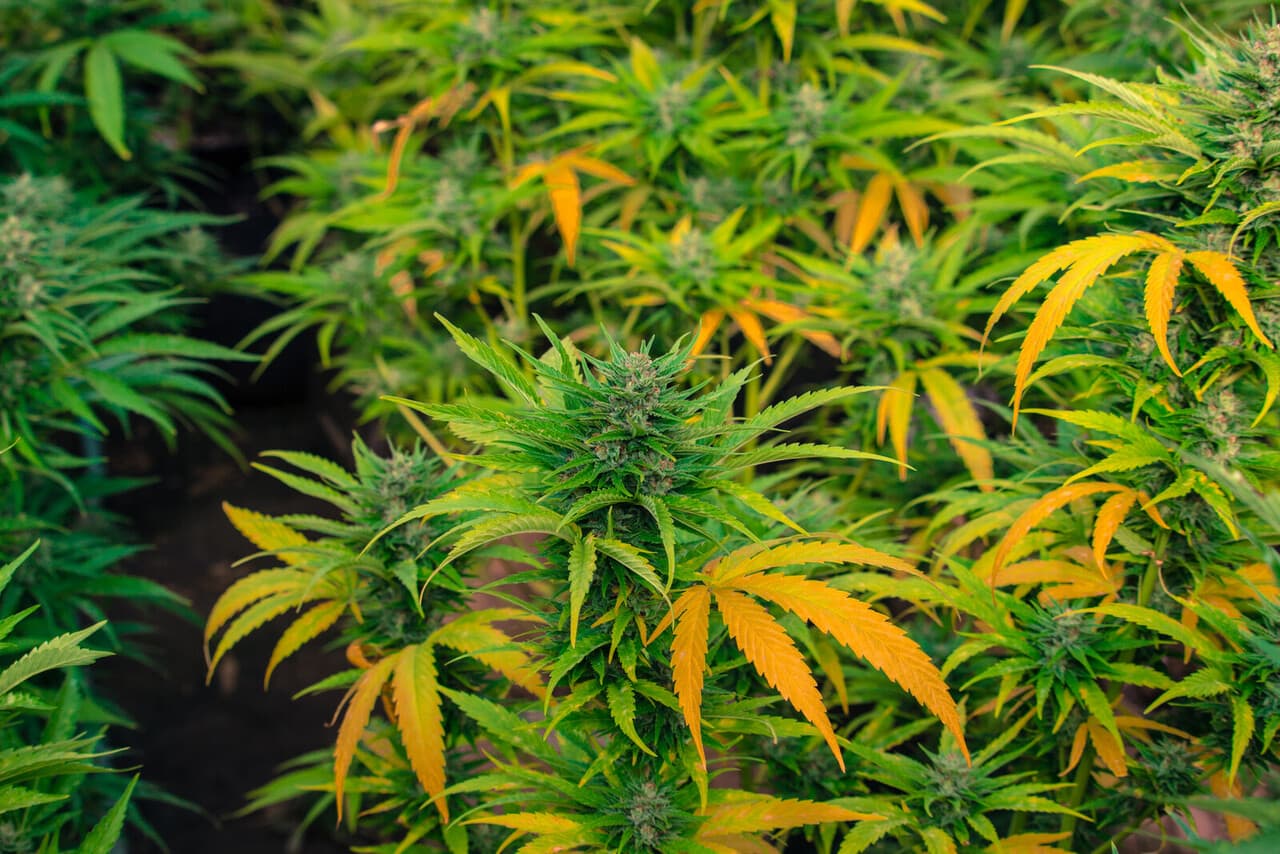
Effects of excessive zinc in the cannabis plant
Excess zinc is quite rare but can lead to the cannabis plant’s death. An excess of this mineral is even worse than zinc deficiency in cannabis. Excess zinc can lead to the lockout of other nutrients and bring more trouble, like a sulfur deficiency in cannabis.
As such, you’ll perceive symptoms of the condition quicker as the plant responds to deficiency of other nutrients, particularly mobile macronutrients like sulfur, even faster throughout the plant.
Zinc lockout
Your cannabis plant only requires small trace amounts of micronutrients, available from basically any water type, except for distilled water. If your cannabis plant then shows deficiency symptoms, it’s more than likely because of nutrient lockout, wrong water pH (optimal range between 6 and 7), or a surplus of another nutrient. A surplus of any other element could lead to zinc deficiency in plants or prevent other nutrients from being absorbed by the plant.
Zinc toxicity
A surplus of zinc or any other element could prevent other nutrients from being absorbed. Therefore, never over-fertilize your plant if you witness zinc deficiency in the weed.
If there's an excess of zinc, you’ll need to flush your plant with water to eliminate all the excessive nutrients and salt buildup in the soil. Wait for the soil to dry before watering it again.
Ensuring optimum zinc levels in your cannabis plants
Here’s what you must do to keep your plants healthy with sufficient zinc:
- Use a complete fertilizer, mineral supplements, or Cal-Mag products that contain trace elements to prevent zinc deficiency in your cannabis plant.
- Once the cause of zinc depletion is found, flush your plant to clean out the roots and remove stale water pockets.
- Check your soil’s pH to ensure it's in the right range.
Remember, it’s about finding the cause first when stopping zinc deficiency before dealing with the symptoms.
A small hole can sink a great ship
Though often overlooked, cannabis zinc deficiency will sadly bring about lower yields and reduced potency. Now you’re better placed to deal with the problem by monitoring your plant’s physical appearance, carrying out tests, and supplying the right nutrients.
Remember, changes won't happen overnight, and patience will carry the day. Don't fear if the first symptoms occur, because it's an opportunity to become a better cultivator with firsthand experience, and this can help you in your quest to grow gangantuan yields from high quality seeds.

 THC
THC THCA Flower
THCA Flower